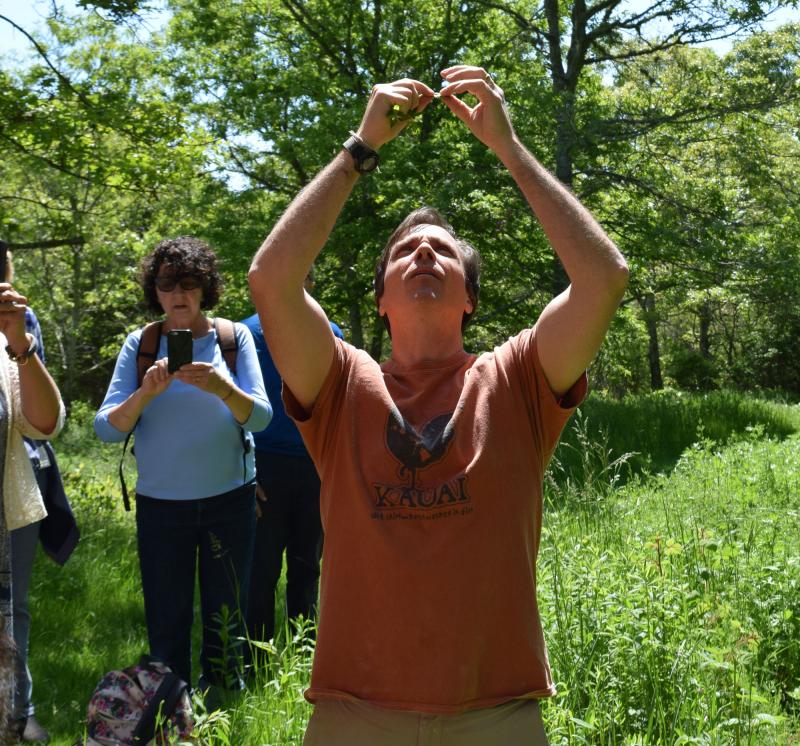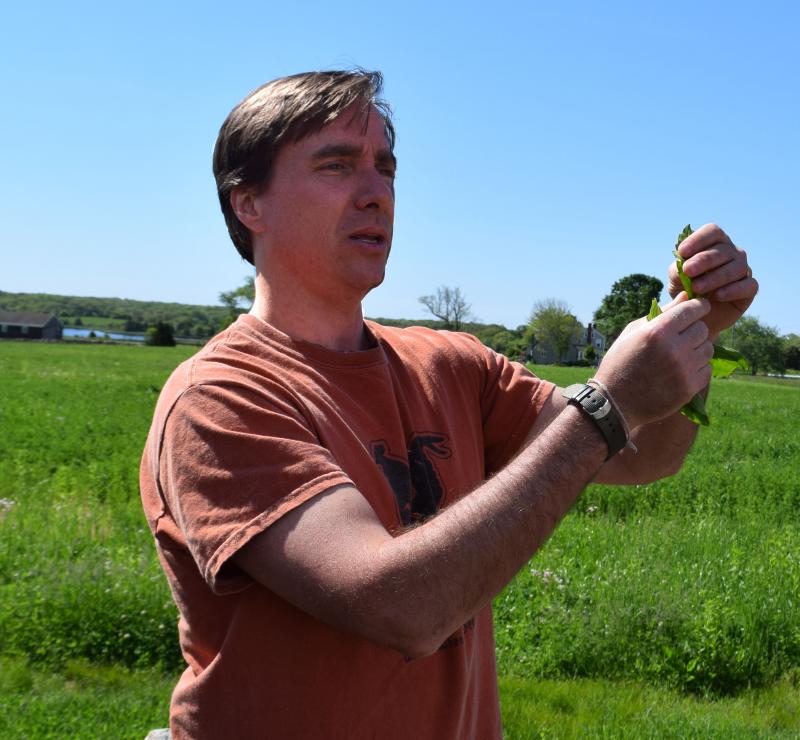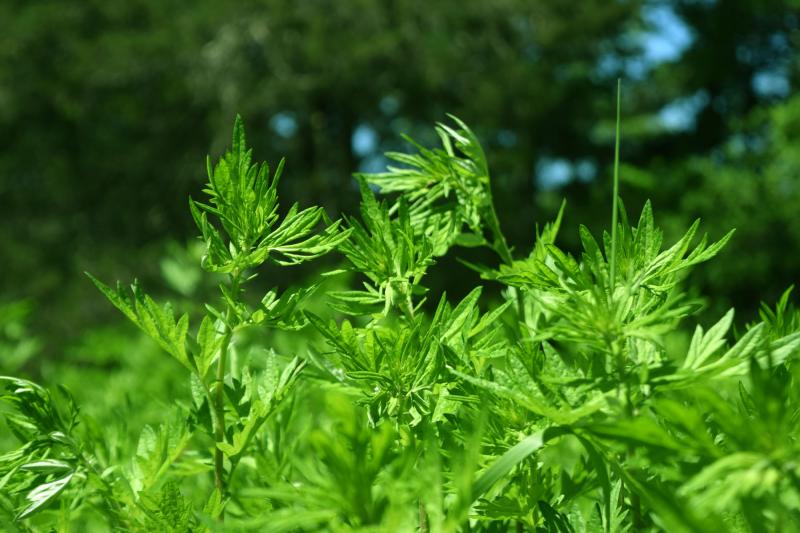Foraging walk finds healthy uses for everyday plants
Brendan Kelly was only 50 feet into the trail at Slocum’s River Reserve before he spotted his first snack of the day, plantain leaves growing alongside the trail. Without thinking, he picked off a leaf and ate it.
It was not a random act. Kelly, an acupuncturist, herbal medicine practitioner, and author, led about 30 people on a wild plant foraging walk on June 3, stopping to identify and taste plants that contain hidden health benefits.
Plantain, Kelly explained, has many medicinal properties. As participants chewed on the leaves, they immediately noticed their mouths drying out.
“It dries out dampness in the lower parts of the body, including the bladder,” Kelly said, connecting his foraging walk with concepts of traditional Chinese medicine. Consuming the plant helps promote urination, as it is a diuretic. That makes the herb ideal for issues like urinary track infections, and kidney and bladder infections, Kelly said.
Wild dandelions might be a frustrating pest for homeowners or gardeners, but for those interested in herbs, they’re a valuable tool.
“A lot of plants we try to get rid of actually have medicinal properties,” Kelly explained.
Like plantain, dandelion is also a diuretic. Kelly said it also helps move energy from the liver throughout the body, making it ideal for those with liver issues like hepatitis or cirrhosis.
Participants in the program also sampled wild Saint John’s wort, a yellow flowering plant which could help with depression. It also has anti-inflammatory properties, making it useful for dealing with pain.
"This herb moves energy everywhere, which can be effective for depression,” Kelly said.
He also found some wild burdock. This biennial plant is a bit trickier to use for medicinal purposes because of its complex lifecycle. The burdock Kelly found was too immature to harvest.
“The time to harvest is in the fall of the first year, or the spring of the second year,” Kelly said. “You want to harvest these when they’re the most concentrated.”
Burdock is well-suited for use in tonics and teas, but only the roots are typically used for this purpose as they contain the plant’s key medicinal ingredients.
For those who want to get into wild plant foraging, Kelly said he strongly recommends a class offered by teachers well-versed in the subject. He recommended Herbstalk, an organization based in Somerville.

















